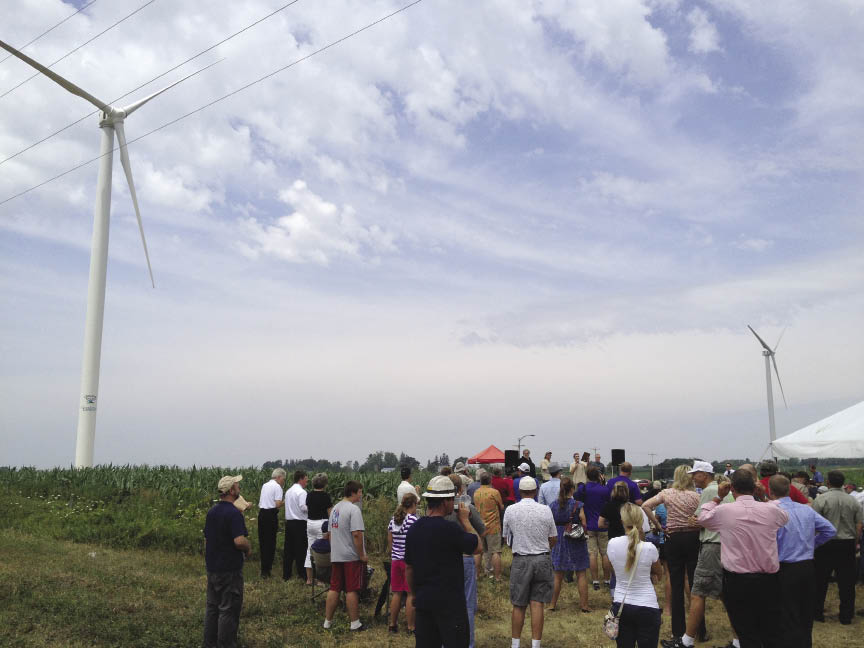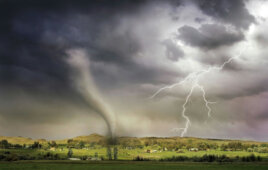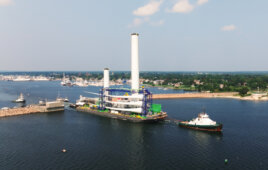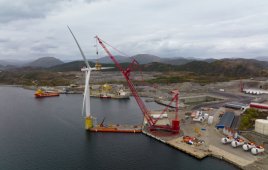From schools to corporate campuses, community wind is a growing sector in the wind energy industry. It differs from large-scale projects in that it relies heavily on local involvement and ownership. Although often of smaller scale than investor-owned or third-party industrial wind farms, community wind projects have the appeal to be an industry bright spot in 2013.

Local residents join Organic Valley and Gundersen Health System in the inauguration of Wisconsin’s first community wind farm, Cashton Greens.
Full-service wind project developer, WES Engineering, advanced three community wind projects in 2012, including Cashton Greens Wind Farm, Wisconsin’s first community wind project. “There is an excellent opportunity right now for companies, schools, and municipalities to control their energy costs and show leadership in reducing their carbon footprint,” says Wes Slaymaker, president of WES Engineering Inc.
Community wind farms boost distributed generation capacity by providing electricity near or at the point of use. They help keep energy dollars in the local economy, boost energy independence, and let organizations better predict and budget for long-term energy expenditures. Many such projects can have a reasonable return on investment because they offset the retail rates an organization pays for electricity, whereas utility-scale projects are often limited to wholesale pricing.
It is difficult for many developers of industrial-scale wind projects to use the one-year extension of the production tax credit because development of a project takes several years. Community wind projects are more likely to rapidly advance to the 5% construction requirement imposed by the IRS for 2013, thus qualifying for the tax credit. One reason community projects can have a shorter development period is that they may not require such extensive wind data when an organization can self-finance the project. Investor-owned or third-party wind farms require one or two years or more of reliable wind energy data to demonstrate the project will hit specific financial performance goals. This can boost the project-development speed and reduce assessment costs. Community wind farms can also benefit from local politics that may be more favorable to projects initiated by community members rather than outside developers of large projects.
Lastly, community wind projects aid in the advancement of renewable energy development. Unlike a few years ago, turbine manufacturers and contractors are now eager to work on community-based wind farms, adds Slaymaker.“ The opportunity is apparent and we intend to help forward these projects along.” WPE
Filed Under: Community wind, Featured





